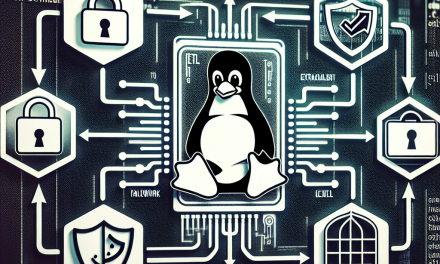In today’s digital landscape, security is paramount—especially when dealing with Linux servers that power critical applications and services. One effective method to enhance server security is to configure user session timeouts, which helps mitigate unauthorized access by ensuring that idle sessions are terminated after a specific period of inactivity. This comprehensive guide will walk you through the steps to set up user session timeouts on Linux servers.
Table of Contents
- Understanding Session Timeouts
- Configuring Timeout Settings for SSH Sessions
- Setting Up Inactivity Timeouts for Local User Sessions
- Configuring GUI Session Timeouts
- Best Practices for Session Timeout Management
- Conclusion
1. Understanding Session Timeouts
A session timeout is a defined period of inactivity after which a user’s session is automatically logged out. The main purposes of session timeouts are:
- Enhancing Security: Preventing unauthorized access to unattended sessions.
- Resource Management: Freeing up server resources by terminating inactive sessions.
2. Configuring Timeout Settings for SSH Sessions
SSH (Secure Shell) is commonly used to manage Linux servers remotely. To configure the timeout settings for SSH sessions, follow these steps:
Step 1: Modify SSH Configuration File
-
Open the SSH configuration file using your preferred text editor:
sudo nano /etc/ssh/sshd_config -
Look for or add the following parameters:
ClientAliveInterval: This parameter defines how often (in seconds) the server checks if the client is still connected. Setting this value too low may lead to frequent disconnections.ClientAliveCountMax: This controls the number of unanswered alive requests before the server assumes the client is no longer connected.
Here’s an example configuration:
ClientAliveInterval 300
ClientAliveCountMax 0This configuration will log the user out after 5 minutes (300 seconds) of inactivity.
Step 2: Save and Restart SSH Service
Save your changes and restart the SSH service to apply the new settings:
sudo systemctl restart sshd3. Setting Up Inactivity Timeouts for Local User Sessions
For local console sessions, you can configure inactivity timeouts using the TMOUT environment variable.
Step 1: Set TMOUT in Shell Configuration Files
To ensure the TMOUT variable applies to all users, add it to a global configuration file like /etc/profile or /etc/bash.bashrc. For a specific user, add it to their ~/.bashrc file.
-
Open the appropriate file in a text editor:
sudo nano /etc/profile - Add the following line:
export TMOUT=300
This sets a timeout of 300 seconds (5 minutes). After this period, the session will be terminated if there is no activity.
Step 2: Apply Changes
To apply the changes immediately, source the file or log out and back in:
source /etc/profile4. Configuring GUI Session Timeouts
If your Linux server uses a graphical user interface (GUI), you may want to configure session timeouts through the desktop environment’s settings.
For GNOME:
- Open the Settings application.
- Navigate to Privacy > Screen Lock.
- Enable "Automatic Screen Lock" and specify the timeout interval.
For KDE Plasma:
- Open System Settings.
- Go to Lock Screen.
- Set the Automatically lock screen option and configure the timeout.
5. Best Practices for Session Timeout Management
- Assess User Needs: Analyze user behavior to set reasonable timeout periods that balance security and usability.
- Regularly Review: Periodically review and adjust timeout settings based on any changes in user behavior or security requirements.
- Educate Users: Inform users about the session timeout settings to help them understand the reasons for logout and plan their activities accordingly.
6. Conclusion
Configuring user session timeouts is a crucial aspect of securing Linux servers. By implementing timeout settings for SSH connections, local user sessions, and GUI environments, you significantly reduce the risk of unauthorized access. By following this comprehensive guide, you can ensure that your Linux server remains secure while maintaining a user-friendly environment.
For more Linux tips and security best practices, stay tuned to WafaTech Blog!





